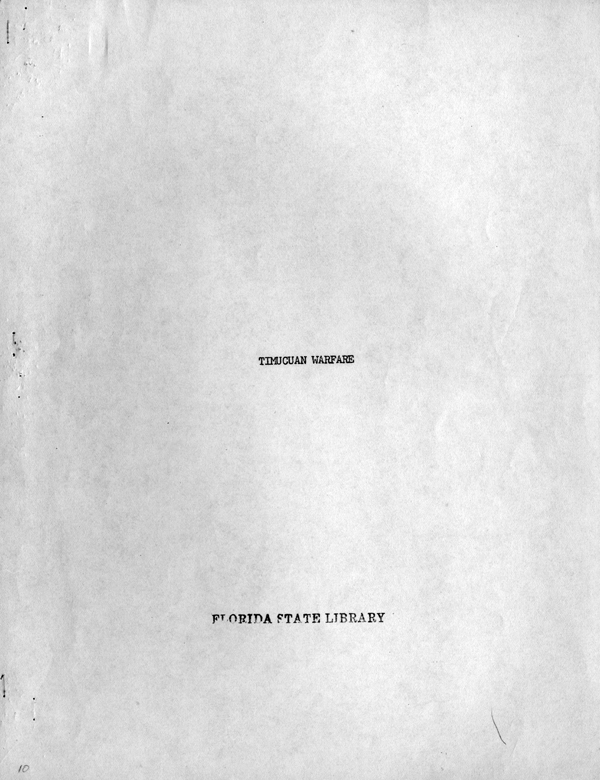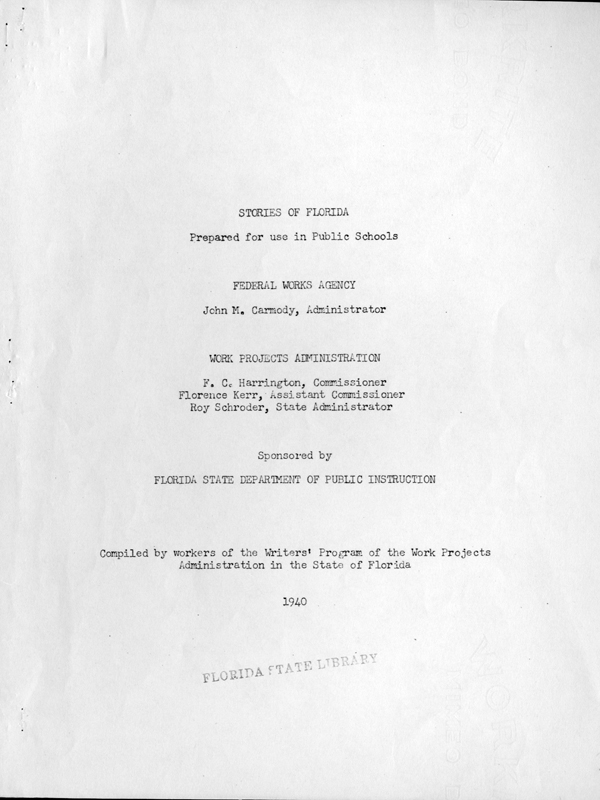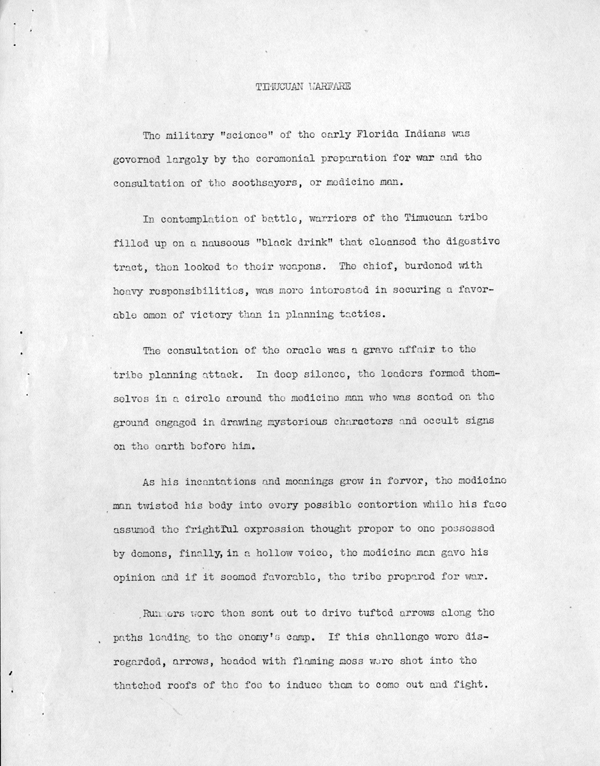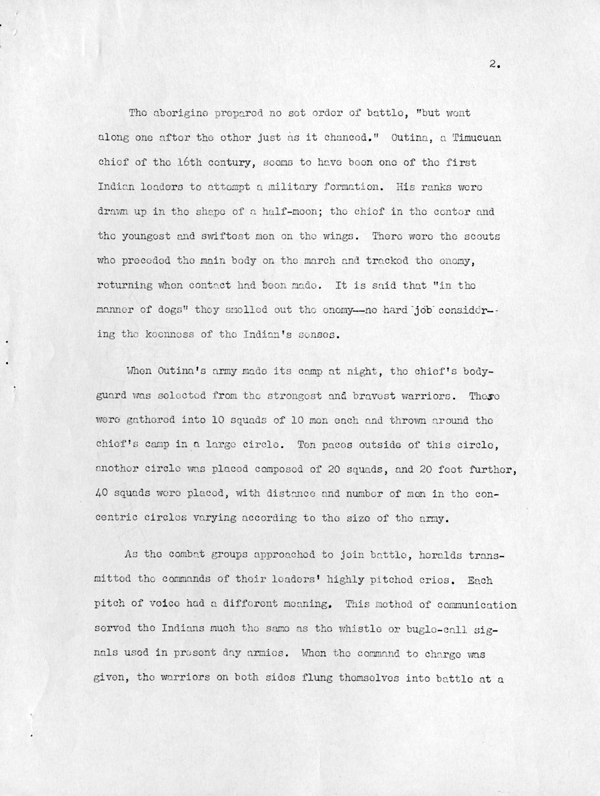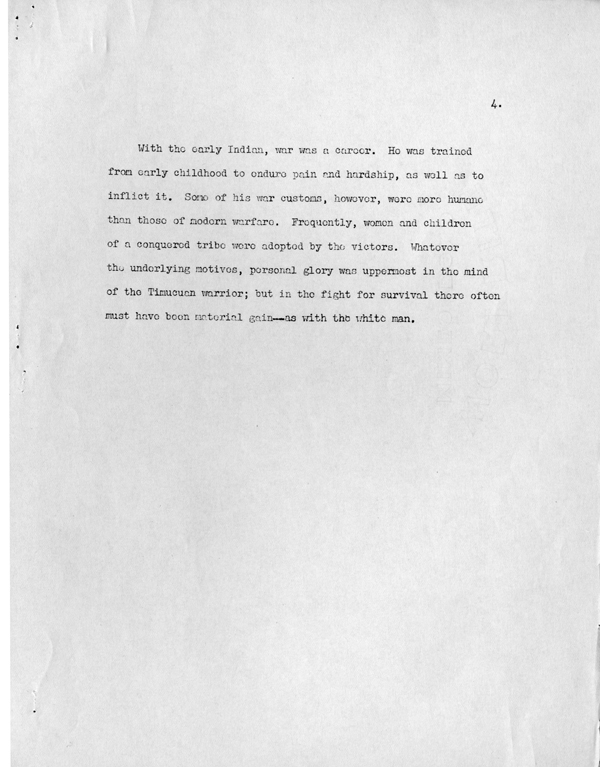Florida Memory is administered by the Florida Department of State, Division of Library and Information Services, Bureau of Archives and Records Management. The digitized records on Florida Memory come from the collections of the State Archives of Florida and the special collections of the State Library of Florida.

State Archives of Florida
- ArchivesFlorida.com
- State Archives Online Catalog
- ArchivesFlorida.com
- ArchivesFlorida.com
State Library of Florida
Related Sites
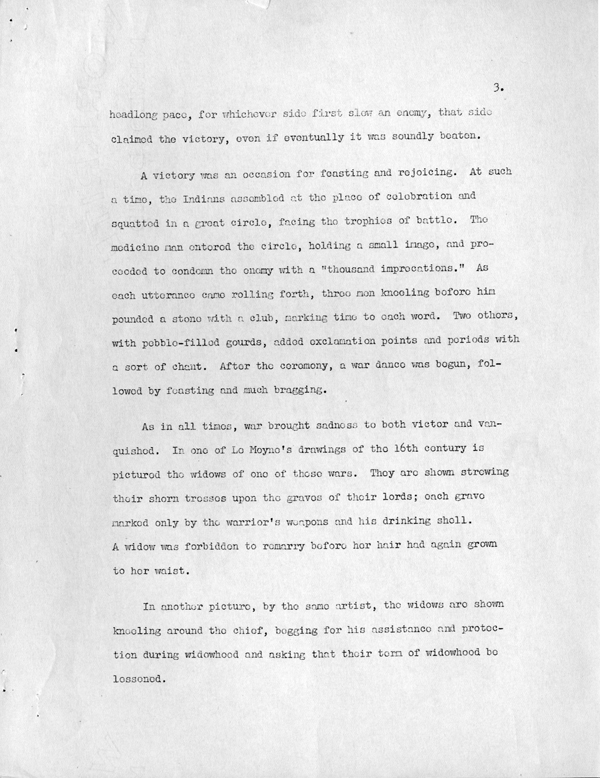
Description of previous item
Description of next item

Title
Published Date
[page 3]
headlong pace, for whichever side first slew an enemy, that side claimed
the victory, even if eventually it was soundly beaten.
A victory was an occasion for feasting and rejoicing. At such a
time, the Indians assembled at the place of celebration and squatted in a
great circle, facing the trophies of battle. The medicine man entered the
circle, holding a small image, and preceded to condemn the enemy with a
"thousand imprecations." As each utterance came rolling forth, three
men kneeling before him pounded a stone with a club, marking time to
each word. Two others, with pebble-filled gourds, added exclamation
points and periods with a sort of chant. After the ceremony, a war dance
was begun, followed by feasting and much bragging.
As in all times, war brought sadness to both victor and
vanquished. In one of Le Moyne's drawings of the 16th century is
pictured the widows of one of these wars. They are shown strewing
their shorn tresses upon the graves of their lords; each grave marked only
by the warrior's weapons and his drinking shell. A widow was
forbidden to remarry before her hair had again grown to her waist.
In another picture, by the same artist, the widows are shown
kneeling around the chief, begging for his assistance and protection
during widowhood and asking that their term of widowhood be
lessened.
Title
Subject
Description
Source
Date
Contributor
Format
Language
Type
Identifier
Published Date
Image URL
Thumbnail
Transcript Path
Image Path
Image Path - Large
Chicago Manual of Style
Timucuan Warfare. 1940. State Archives of Florida, Florida Memory. <https://www.floridamemory.com/items/show/181545>, accessed 15 December 2025.
MLA
Timucuan Warfare. 1940. State Archives of Florida, Florida Memory. Accessed 15 Dec. 2025.<https://www.floridamemory.com/items/show/181545>
AP Style Photo Citation

 Listen: The Assorted Selections Program
Listen: The Assorted Selections Program